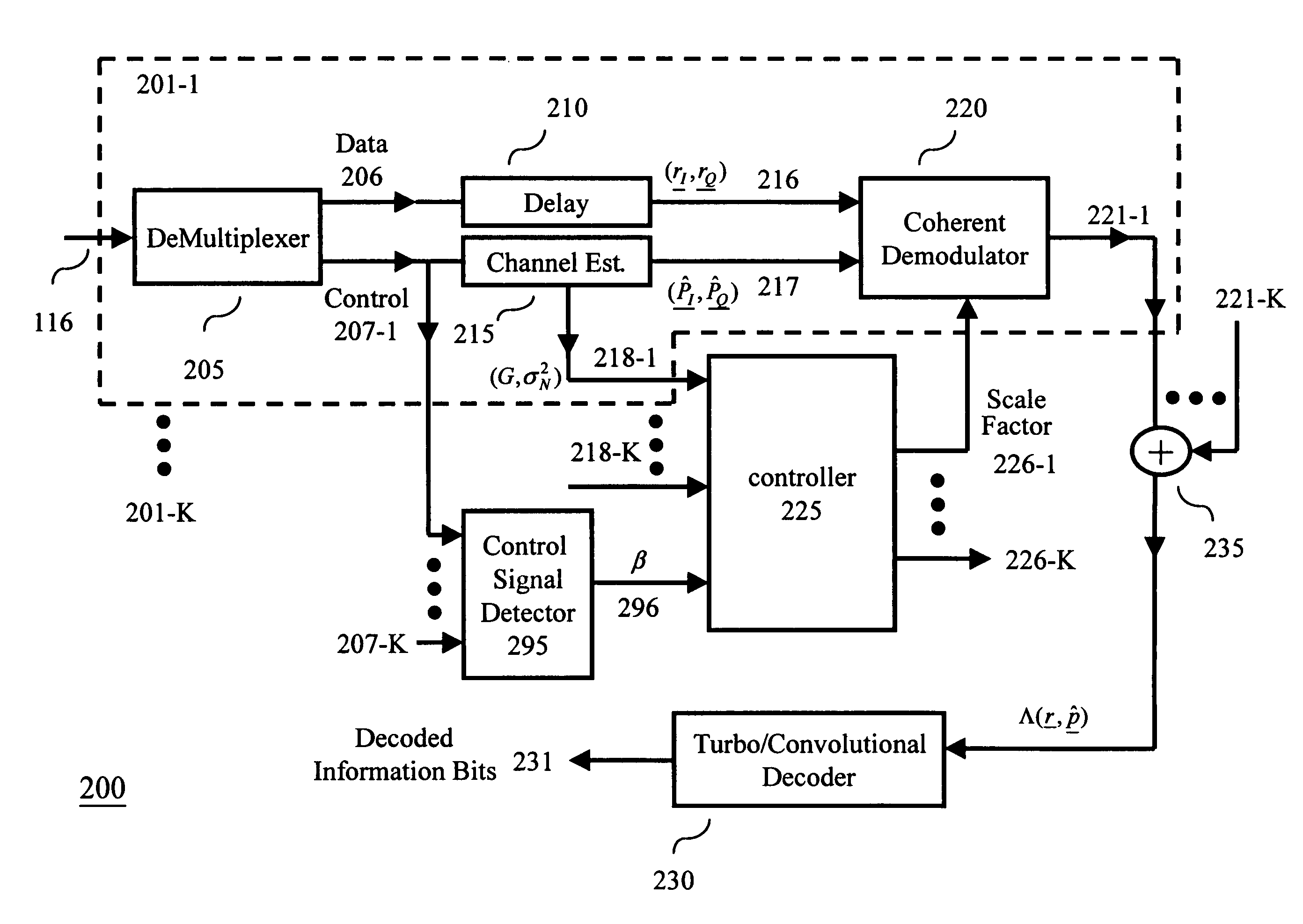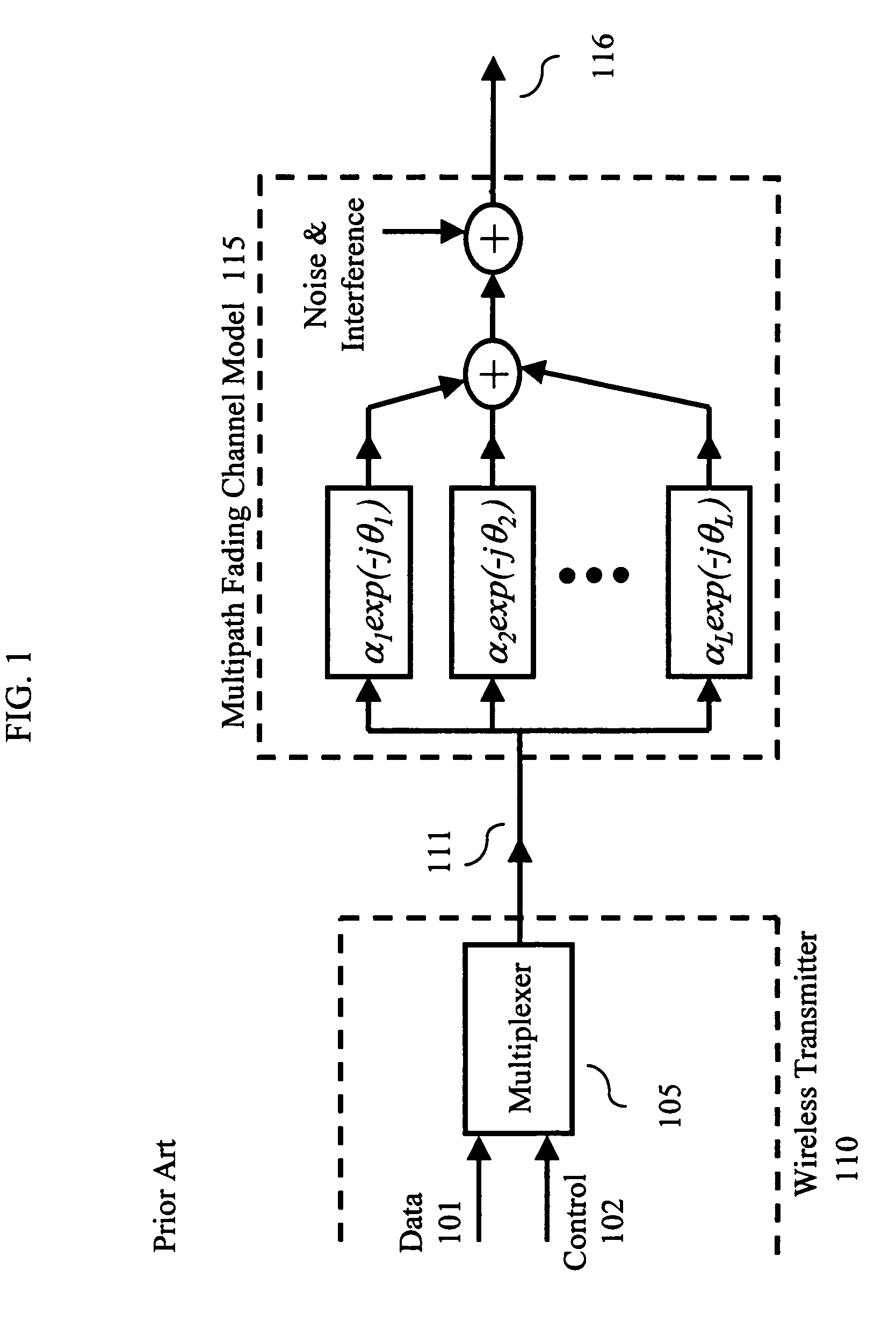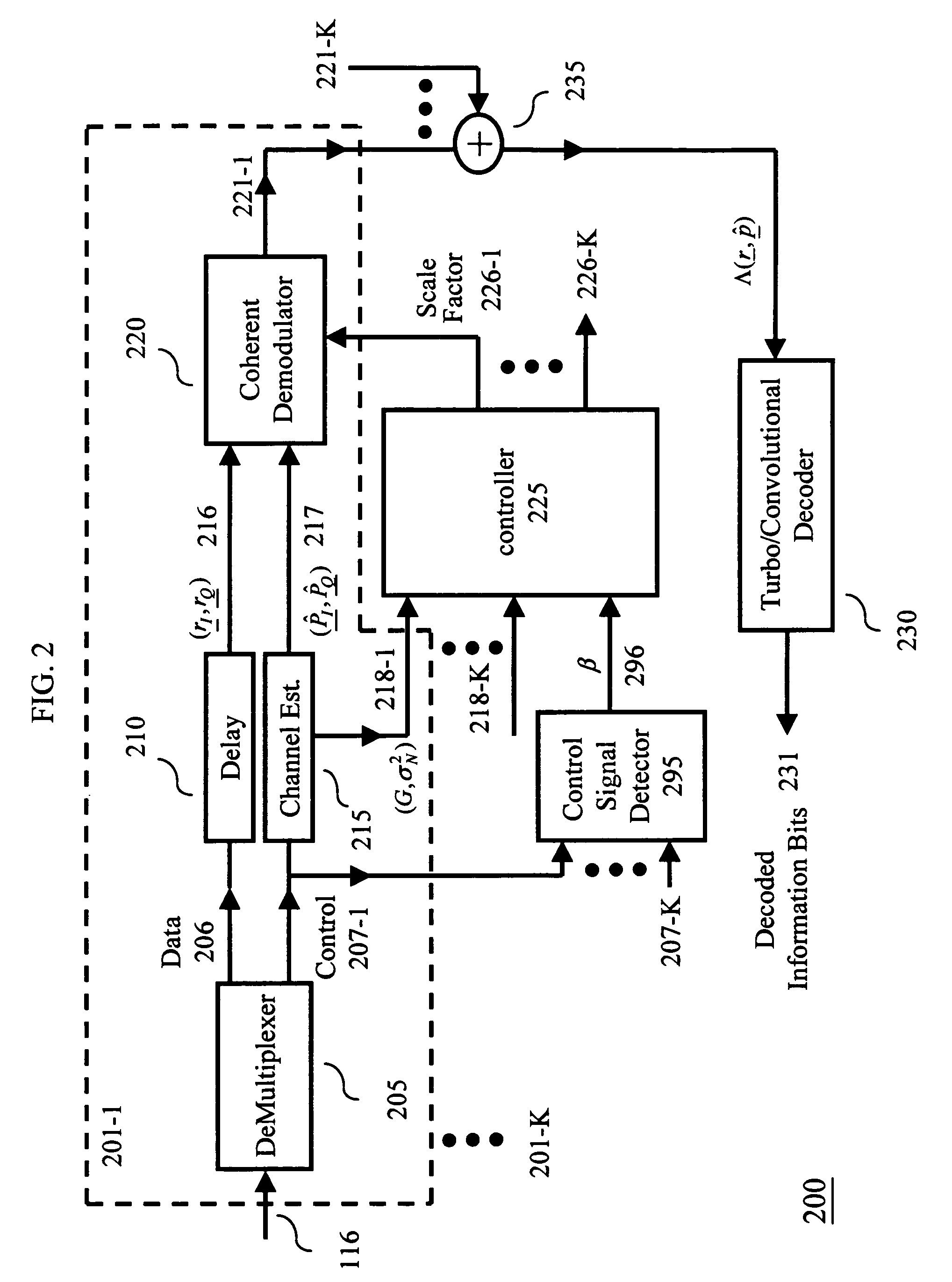Enhanced metric for bit detection on fading channels with unknown statistics
a bit detection and statistics technology, applied in the field of communication, can solve the problems of difficult to infer the phase of the received signal from the modulated data symbols, the demodulation of phase or frequency modulated signals, and the distortion of the transmitted signal, etc., and achieve the effect of improving performan
- Summary
- Abstract
- Description
- Claims
- Application Information
AI Technical Summary
Benefits of technology
Problems solved by technology
Method used
Image
Examples
Embodiment Construction
[0013]FIG. 1 illustrates a prior art transmitter and multipath fading model for use in a CDMA-based system such as UMTS. The representations shown in FIG. 1 are well-known and will not be described herein. It is assumed that a BPSK modulation scheme is used, wherein information bits are encoded as +1 or −1. Wireless Transmitter 110 comprises multiplexer 105, which forms, from a data signal 101 (representing a sequence of data symbols) and a control signal 102 (representing a sequence of pilot symbols and other control information, such as a ratio β (defined below)), a PSAM signal 111 for transmission. As known in the art, PSAM signal 111 is subject to fading, noise and interference. These effects are represented by multipath fading model channel 115, which operates on PSAM signal 111 to provide wireless signal 116 for reception by a wireless receiver. (It should be observed that wireless transmitter 110 represents either endpoint of a wireless connection, e.g., a base station or a t...
PUM
 Login to View More
Login to View More Abstract
Description
Claims
Application Information
 Login to View More
Login to View More - R&D
- Intellectual Property
- Life Sciences
- Materials
- Tech Scout
- Unparalleled Data Quality
- Higher Quality Content
- 60% Fewer Hallucinations
Browse by: Latest US Patents, China's latest patents, Technical Efficacy Thesaurus, Application Domain, Technology Topic, Popular Technical Reports.
© 2025 PatSnap. All rights reserved.Legal|Privacy policy|Modern Slavery Act Transparency Statement|Sitemap|About US| Contact US: help@patsnap.com



